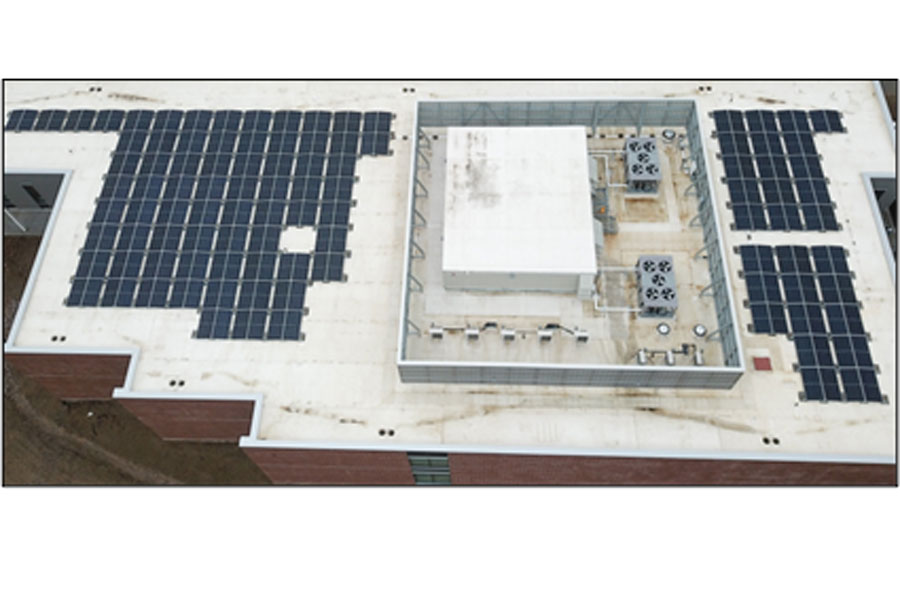Innovative solution solves design challenges for solar installation
Duke Building rooftop solar installation forecast to offset 40% of building’s electricity use

The University of Pittsburgh is celebrating the installation of the first of several SolarEdge DC-optimized rooftop solar installations across multiple campuses. This newest 108kW system is installed on the state-of-the-art George B. Duke Engineering and Information Technologies Building on the Pitt-Bradford campus. Now operational, the solar system is expected to produce 116,500 kWh of electricity each year, offsetting approximately 40% of the building’s total electricity use.
The rooftop solar installation is a key part of the university’s goal to achieve a Leadership in Energy and Environmental Design (LEED) certification for the building, which serves as the campus hub for engineering, computing, and energy studies. It will help to power the facility’s virtual reality lab, networking lab, makerspace, ample fabrication space, and engineering shops, all of which provide students with invaluable first-hand learning opportunities.
A company from Pittsburgh called EIS Solar designed and put in the solar system. It picked SolarEdge’s DC-optimized inverter solution to overcome design challenges that would have otherwise significantly reduced the amount of energy the system could produce.
“While the new Pitt-Bradford building is remarkable, the solar installation component was technically very challenging,” commented Joe Morinville, president of EIS Solar. “The roof accommodates a large mechanical penthouse, which meant we were only able to install panels on about one-third of the roof. Another challenge was the nine-foot-tall skirting around the penthouse, which will cast shading over portions of the solar array at certain times of the day.
“Given these constraints, it would not have been possible to generate enough power from the roof with a traditional string inverter system to make solar a viable investment for the university. However, with SolarEdge’s DC-optimized technology, we have been able to realize Pitt’s vision of powering its curriculum with clean, renewable energy.”
The Pitt-Bradford system is comprised of 200 bifacial modules. These are set up in two separate arrays on either side of the penthouse. Each array is controlled by a SolarEdge inverter and uses SolarEdge Power Optimizers. Thes optimizers help them work separately from the others in the same array.
This setup gave EIS Solar the freedom to place the modules in a way that catches the sun from east to west. They also make some groups of modules longer than others. This was important to use up as much roof space as possible. The Power Optimizers also help by making sure the modules don’t lose power over time and by making sure all of them work well together. This is important for bifacial modules because they have special challenges due to how they’re placed on the roof.
“Pitt-Bradford is proud to boast the largest rooftop array across five University of Pittsburgh campuses to date,” said Dr. Matt Kropf, Director of the Energy Institute at Pitt-Bradford. “This new solar installation joins one on the Richard E. and Ruth McDowell Sport and Fitness Center in helping Pitt-Bradford students experience the importance of solar first-hand in our growing energy and science curricula, and our region.”
The University of Pittsburgh’s Executive Director of Sustainability, Dr. Aurora Sharrard, added: “As we advance toward our goal of producing or procuring 100% renewable electricity by 2037 across the University of Pittsburgh, Pitt-Bradford has been a leader in advancing rooftop solar on Pitt buildings.”